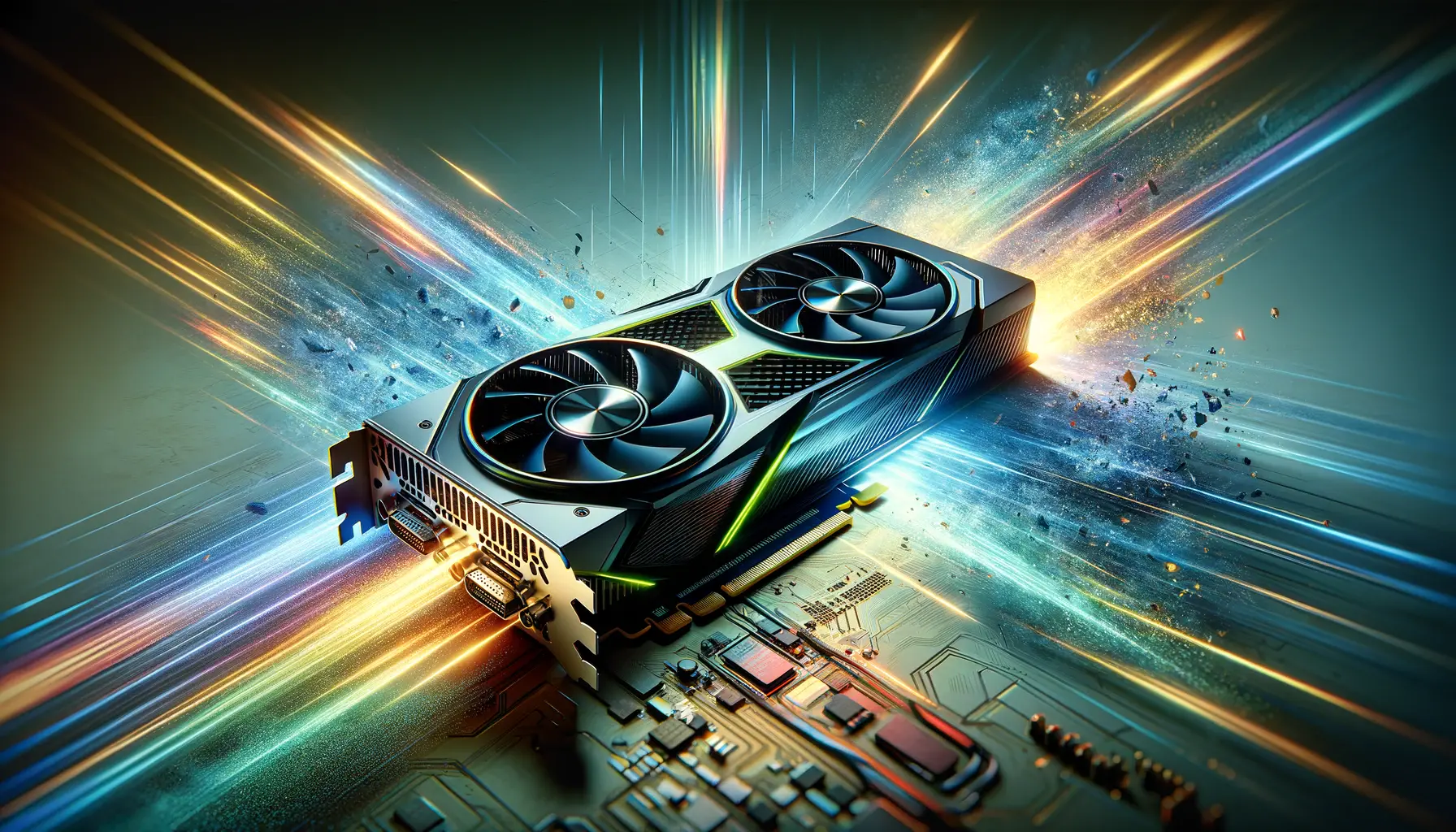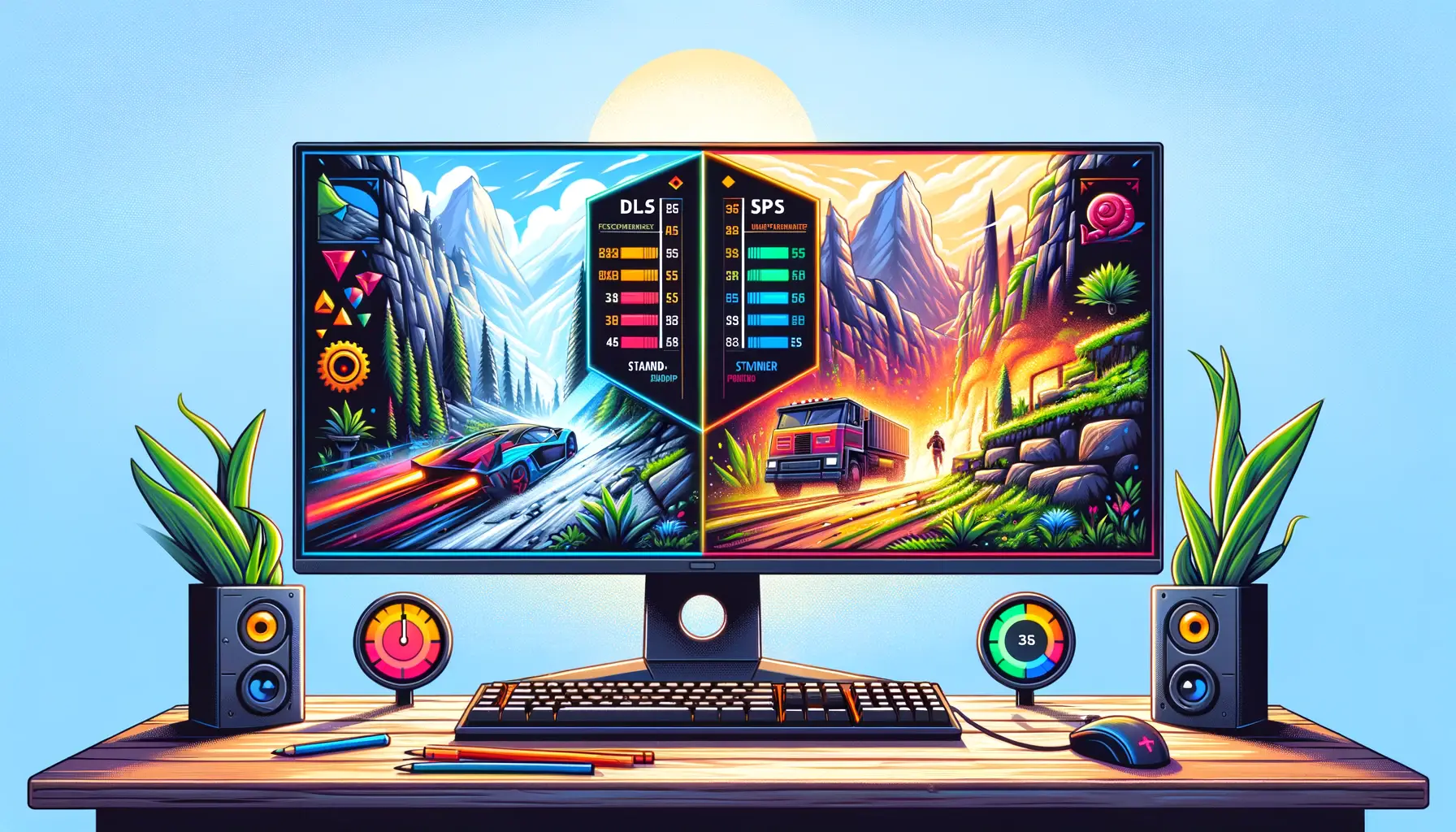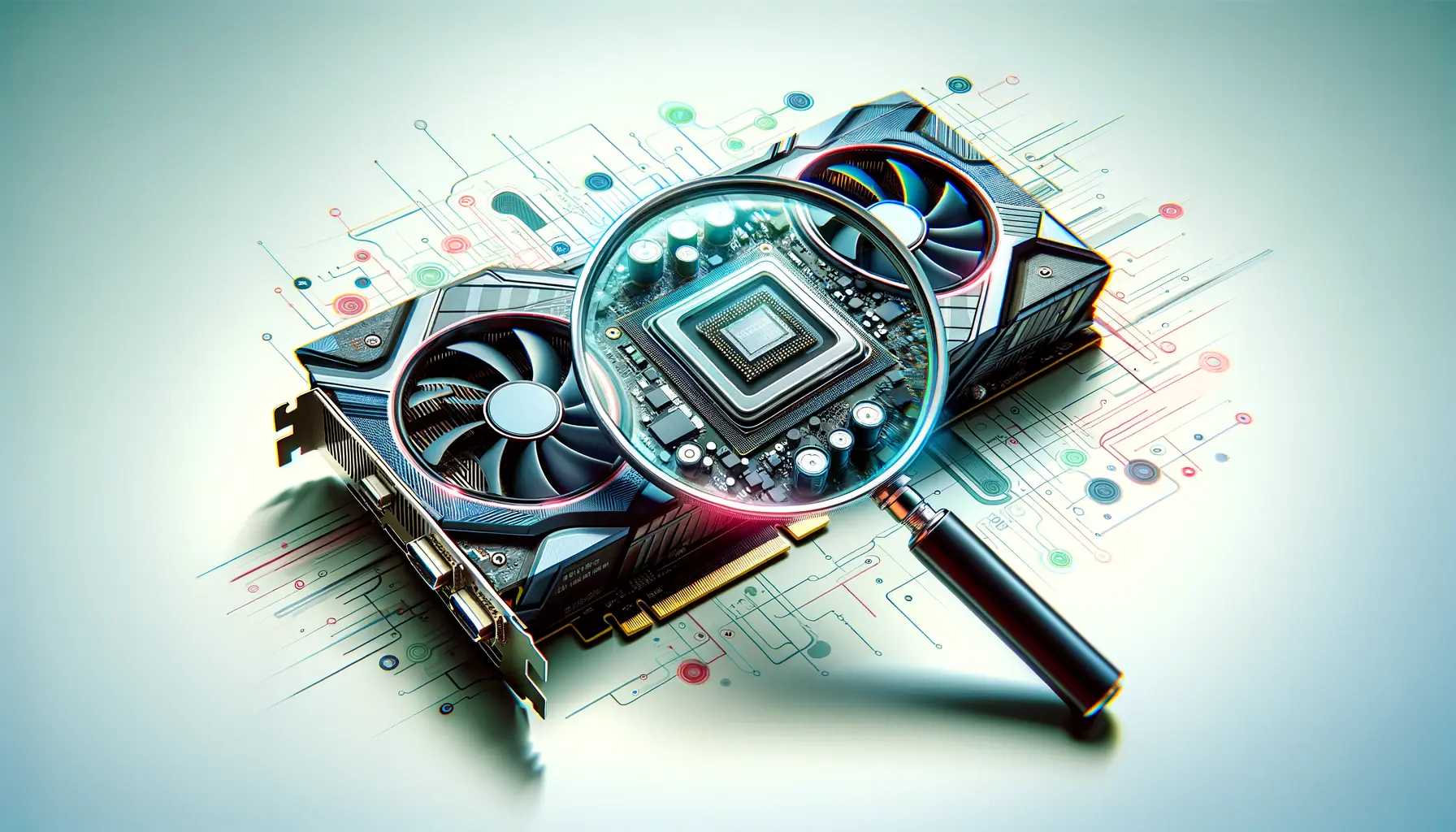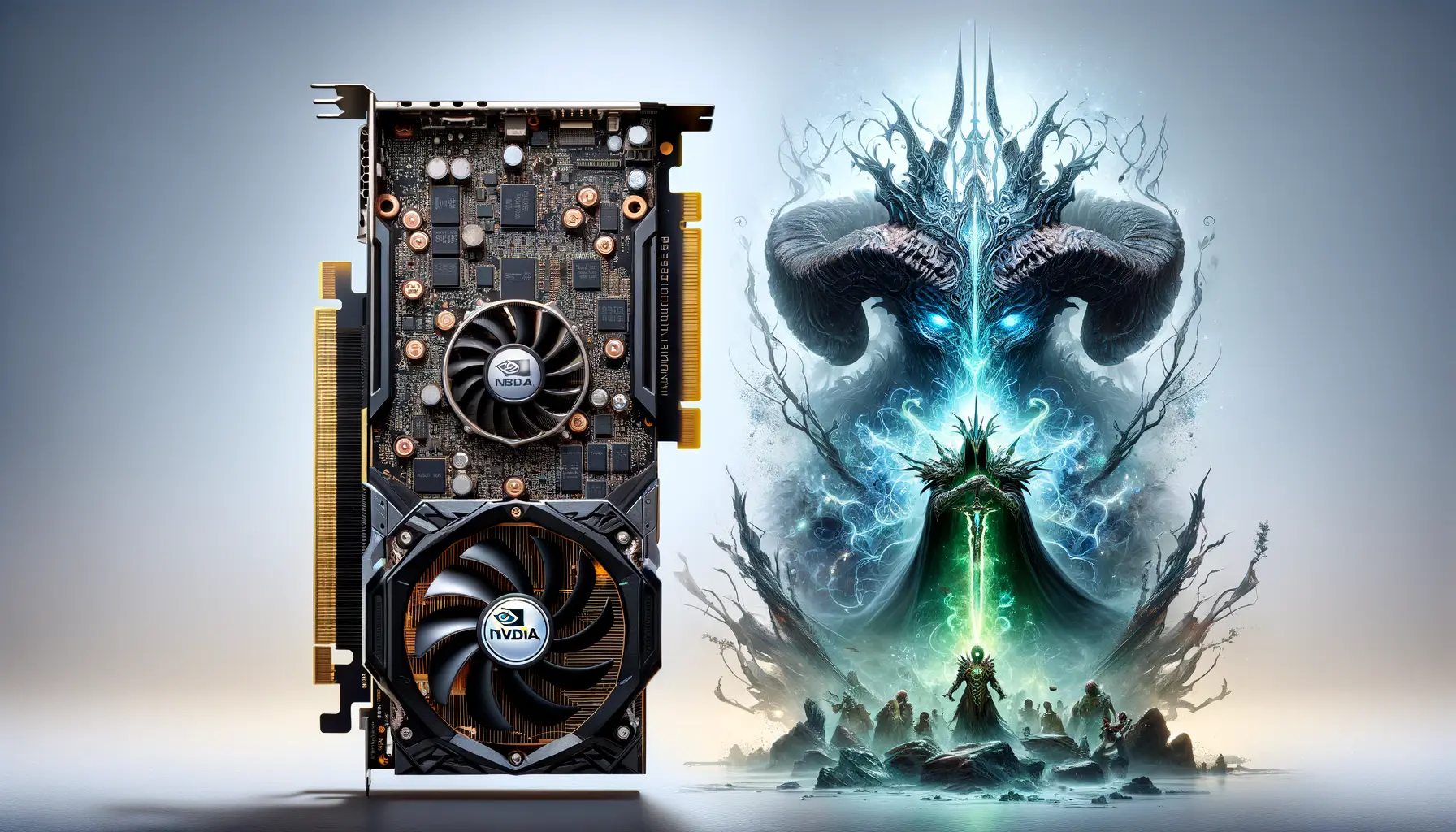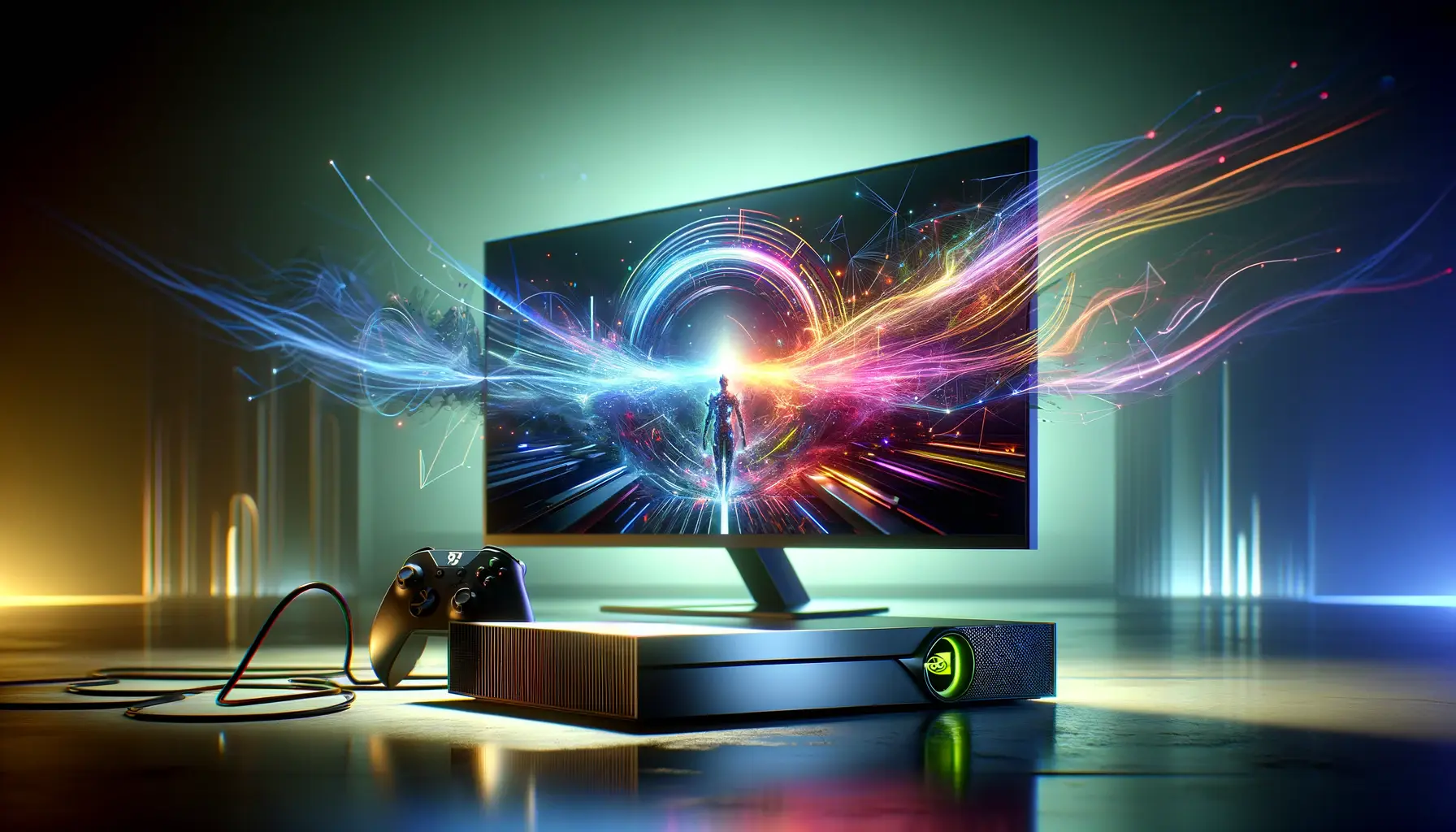The realm of gaming and graphical fidelity has been revolutionized with the advent of NVIDIA’s Deep Learning Super Sampling (DLSS) technology, particularly with its latest iteration, DLSS 3.
This groundbreaking technology has not only redefined the boundaries of visual quality and performance but has also introduced an ‘Ultra Performance Mode’ that promises to push the limits of gaming experiences.
NVIDIA DLSS 3, as a pivotal innovation in the category of gaming technology, leverages advanced AI and machine learning algorithms to upscale images in real-time, delivering stunning visuals without compromising on performance.
The introduction of the Ultra Performance Mode within DLSS 3 marks a significant milestone for gamers and developers alike, offering unprecedented frame rates at high resolutions, such as 4K, without sacrificing the quality of the gaming experience.
This mode is particularly beneficial for users with high-resolution displays seeking to maximize their gaming performance while maintaining visual fidelity.
By understanding the mechanics and benefits of DLSS 3’s Ultra Performance Mode, gamers can fully appreciate the technological marvel that NVIDIA has brought to the gaming industry.
- Understanding DLSS Technology
- Benefits of Ultra Performance Mode
- How DLSS 3 Ultra Performance Mode Works
- Comparing DLSS Modes
- Game Compatibility and Support
- Optimizing Settings for Ultra Performance
- Future Developments in DLSS Technology
- Embracing the Future with NVIDIA DLSS 3 Ultra Performance Mode
- NVIDIA DLSS 3 Ultra Performance Mode FAQs
Understanding DLSS Technology
What is DLSS?
At its core, Deep Learning Super Sampling (DLSS) is an AI-driven rendering technology developed by NVIDIA to enhance graphical performance without the need for higher-end hardware.
By utilizing the dedicated Tensor Cores found in GeForce RTX GPUs, DLSS intelligently upscales lower-resolution images in real-time, achieving higher frame rates while maintaining or even improving image quality.
This process allows gamers to experience rich, detailed environments and smooth gameplay even on systems that might otherwise struggle with demanding titles.
The technology behind DLSS involves training neural networks with ultra-high-quality 16K gaming content.
These AI models learn how to predict high-quality frames with only a fraction of the pixels traditionally required.
As a result, DLSS can produce images that look as good as native resolution or even better, with significantly improved performance.
This breakthrough has made it a cornerstone feature for gamers seeking the best possible experience from their RTX-enabled systems.
The Evolution to DLSS 3
NVIDIA’s journey through the iterations of DLSS has been marked by continuous improvement and innovation.
From its first introduction to the latest DLSS 3, each version has brought enhancements in speed, efficiency, and image quality.
DLSS 3, however, represents a quantum leap forward, incorporating not just spatial upscaling but also temporal and AI-driven frame generation techniques.
This new approach allows for the insertion of additional frames into the game, reducing latency and making gameplay feel smoother and more responsive.
DLSS 3’s Ultra Performance Mode is specifically designed for ultra-high-resolution gaming, targeting resolutions like 8K.
This mode utilizes an even more aggressive AI upscaling technique to achieve the highest possible frame rates.
While it’s primarily aimed at users with 8K displays, it also benefits those with 4K monitors by providing an option to push frame rates to the limit, ensuring a fluid gaming experience without compromising on visual quality.
DLSS 3’s Ultra Performance Mode is a game-changer for high-resolution gaming, offering an unparalleled balance between performance and image quality.
Benefits of Ultra Performance Mode
The Ultra Performance Mode in NVIDIA DLSS 3 is not just a technical achievement; it’s a transformative feature that significantly enhances the gaming experience.
By intelligently balancing the trade-off between performance and image quality, this mode offers several key benefits that cater to the needs of gamers and content creators alike.
Understanding these advantages is crucial for anyone looking to optimize their gaming setup or push their content creation boundaries.
Enhanced Frame Rates at High Resolutions
One of the primary benefits of the Ultra Performance Mode is its ability to deliver exceptionally high frame rates, even at 4K and 8K resolutions.
This is particularly important for gamers who have invested in high-resolution displays and wish to experience their favorite titles in the best possible quality without any compromise on smoothness or responsiveness.
The mode achieves this by:
- Reducing the internal rendering resolution, thereby decreasing the load on the GPU.
- Applying sophisticated AI algorithms to upscale the image to the target resolution, ensuring that the final output retains high visual fidelity.
Improved Gaming Experience on Lower-End Hardware
DLSS 3’s Ultra Performance Mode also democratizes high-quality gaming by making it accessible to those with less powerful hardware.
By leveraging AI upscaling, gamers with mid-range GPUs can enjoy games at higher resolutions and frame rates that were previously only achievable with top-tier hardware.
This inclusivity enhances the overall gaming ecosystem, allowing a broader audience to experience cutting-edge visual technologies.
Energy Efficiency and Lower Heat Generation
Another significant advantage of utilizing Ultra Performance Mode is the reduction in energy consumption and heat generation.
By optimizing the rendering process, DLSS 3 allows GPUs to operate more efficiently, leading to:
- Lower power consumption, which is especially beneficial for gamers concerned about their carbon footprint or electricity bills.
- Reduced heat output, which can prolong the lifespan of hardware components and decrease the need for aggressive cooling solutions.
The Ultra Performance Mode in DLSS 3 represents a perfect blend of innovation and practicality, offering a sustainable and accessible way to enjoy high-resolution gaming.
How DLSS 3 Ultra Performance Mode Works
The inner workings of NVIDIA DLSS 3’s Ultra Performance Mode are a testament to NVIDIA’s commitment to pushing the boundaries of gaming technology.
This mode is a complex interplay of hardware capabilities, software algorithms, and deep learning techniques, all designed to deliver the best possible gaming experience.
Understanding how it operates not only sheds light on the technological marvel behind it but also helps gamers and developers make informed decisions about their hardware and software choices.
At the heart of DLSS 3’s Ultra Performance Mode is a series of steps that transform lower-resolution images into stunningly detailed high-resolution outputs.
This process involves:
- Frame Generation: Unlike traditional rendering methods, DLSS 3 incorporates AI to generate additional frames. This is achieved by predicting motion vectors and animating between existing frames, effectively increasing the frame rate without additional computational load on the GPU.
- Super Resolution: Alongside frame generation, DLSS 3 uses advanced super-resolution techniques to upscale images. By analyzing a lower-resolution input, the AI model reconstructs it at a higher resolution, filling in details that would otherwise be lost.
- Temporal Feedback: To ensure consistency and improve image quality over time, DLSS 3 utilizes temporal feedback techniques. This involves using information from previous frames to inform the upscaling of current and future frames, resulting in smoother transitions and more stable visuals.
Integration with NVIDIA RTX GPUs
The effectiveness of DLSS 3’s Ultra Performance Mode is largely due to its deep integration with NVIDIA’s RTX GPUs.
These graphics cards are equipped with dedicated Tensor Cores, which are specialized hardware designed to accelerate deep learning tasks.
By offloading the intensive AI calculations to these cores, DLSS 3 can perform its upscaling and frame generation tasks without significantly impacting the overall performance of the GPU.
This synergy between hardware and software is what allows DLSS 3 to achieve its remarkable results.
In summary, DLSS 3’s Ultra Performance Mode represents a sophisticated blend of AI and graphics technology.
Its ability to enhance frame rates and image quality simultaneously, without requiring more powerful hardware, marks a significant advancement in the field of gaming and content creation.
As this technology continues to evolve, it promises to bring even more impressive improvements to the visual fidelity and performance of video games and other graphically intensive applications.
DLSS 3’s Ultra Performance Mode leverages AI and dedicated hardware to redefine gaming performance and visual quality.
Comparing DLSS Modes
NVIDIA’s DLSS technology offers multiple modes, each designed to cater to different gaming needs and preferences.
Understanding the distinctions between these modes, including the Ultra Performance Mode, is crucial for gamers and developers aiming to optimize their experience or the performance of their games.
This comparison sheds light on how each mode operates and who it’s best suited for, providing insights into the strategic choices behind DLSS settings.
DLSS offers four primary modes: Quality, Balanced, Performance, and Ultra Performance.
The choice between these modes affects the game’s resolution, frame rate, and overall visual fidelity.
Here’s a breakdown of what each mode offers:
- Quality Mode: Focuses on maximizing image quality by using a higher base resolution before upscaling. This mode is ideal for gamers who prioritize visual detail over frame rate.
- Balanced Mode: Offers a middle ground between image quality and performance. It uses a moderately reduced base resolution for upscaling, providing a good mix of visual fidelity and frame rate.
- Performance Mode: Prioritizes frame rate by significantly reducing the base resolution before upscaling. This mode is suitable for gamers who prefer smoother gameplay, especially in fast-paced titles.
- Ultra Performance Mode: Designed for the highest possible frame rates, particularly at ultra-high resolutions like 8K. It uses the lowest base resolution for upscaling, making it the best choice for maximizing performance.
Choosing the Right DLSS Mode
The selection of a DLSS mode depends on several factors, including the gamer’s hardware, the resolution of their display, and personal preferences regarding image quality versus frame rate.
For instance, gamers with 4K or 8K displays might lean towards Ultra Performance Mode to enjoy high frame rates without significant losses in visual quality.
Conversely, those with more modest setups or who play more visually detailed games might prefer the Quality or Balanced modes to ensure the best possible image fidelity.
It’s also worth noting that the impact of each mode can vary depending on the game and its specific implementation of DLSS.
NVIDIA and game developers continuously work to refine DLSS performance, making it essential for users to experiment with settings and updates to find the optimal configuration for their needs.
Experimentation is key to finding the ideal DLSS mode for your gaming setup, as the optimal choice can vary widely based on hardware, game, and personal preference.
Game Compatibility and Support
The adoption of NVIDIA DLSS 3 and its Ultra Performance Mode across the gaming industry has been a pivotal development for both developers and gamers.
This technology’s compatibility with a wide range of titles ensures that many can benefit from enhanced performance and visual quality.
However, the extent of these benefits can vary depending on how developers implement DLSS within their games.
For a game to support DLSS, including Ultra Performance Mode, it must be specifically integrated by the game’s developers.
NVIDIA provides a comprehensive SDK and support to developers wishing to incorporate DLSS into their titles.
This collaboration between NVIDIA and game developers is crucial for optimizing the performance of DLSS and ensuring that gamers receive the best possible experience.
Expanding Library of DLSS-Enabled Games
The library of games that support DLSS is continuously growing, encompassing a wide range of genres from fast-paced shooters to immersive role-playing games.
This expansion is a testament to the technology’s versatility and its ability to enhance gaming experiences across the board.
Some notable titles that have embraced DLSS, including its Ultra Performance Mode, include:
- Action-packed first-person shooters that benefit from higher frame rates for smoother gameplay.
- Graphically intensive role-playing games where enhanced visuals contribute to a more immersive experience.
- Real-time strategy games, where the clarity provided by DLSS can help players make better decisions on the battlefield.
This growing adoption underscores the gaming community’s recognition of DLSS as a game-changer, capable of delivering both performance improvements and visual enhancements.
Future Prospects for DLSS Support
Looking ahead, the future of DLSS and its integration into new titles looks promising.
NVIDIA continues to work closely with developers to expand the roster of DLSS-enabled games, ensuring that gamers have access to the latest advancements in rendering technology.
Moreover, as more gamers and developers experience the benefits of DLSS, its adoption is expected to accelerate, further solidifying its role in the gaming industry.
The ongoing development and refinement of DLSS technology also suggest that future versions will offer even greater improvements in performance and visual quality.
As such, gamers have much to look forward to, with DLSS set to enhance an even broader array of gaming experiences in the years to come.
The compatibility and support of DLSS across a wide range of games highlight its significance as a transformative technology in the gaming industry.
Optimizing Settings for Ultra Performance
Maximizing the benefits of NVIDIA DLSS 3’s Ultra Performance Mode requires more than just selecting the option in a game’s settings.
To truly optimize the gaming experience, several factors must be considered, including hardware capabilities, game settings, and personal preferences.
This optimization process ensures that gamers can enjoy the highest possible performance without compromising on visual quality.
Understanding how to fine-tune these settings is crucial for anyone looking to leverage the full potential of DLSS 3.
Here are some key considerations and steps to optimize your setup for Ultra Performance Mode:
- Hardware Compatibility: Ensure that your system meets the minimum requirements for DLSS 3, focusing on having a compatible NVIDIA RTX GPU. The performance gains from Ultra Performance Mode are most pronounced on systems equipped with RTX 30 series GPUs or newer.
- Game Resolution: While Ultra Performance Mode is designed to maximize frame rates at high resolutions, starting with the right base resolution is important. For 4K or 8K gaming, Ultra Performance Mode can significantly boost frame rates, but for lower resolutions, a different DLSS mode might be more appropriate.
- DLSS Settings: Experiment with the DLSS settings within each game. Some games offer additional customization options for DLSS beyond the basic mode selection, allowing for further fine-tuning of performance versus visual quality.
- Graphics Settings: Adjusting other graphics settings in conjunction with DLSS can also impact performance and visual quality. Lowering certain demanding settings can allow DLSS to focus on delivering higher frame rates without a noticeable loss in image quality.
Personal Preference and Gameplay Style
Ultimately, the best settings for DLSS 3’s Ultra Performance Mode vary from player to player.
Gamers who prioritize frame rate, such as those playing competitive shooters, might prefer to sacrifice some visual details for smoother gameplay.
Conversely, players engaged in single-player, story-driven titles may opt for a balance that slightly favors image quality to fully immerse themselves in the game’s world.
Regularly updating your GPU drivers and keeping an eye on game patches is also essential.
NVIDIA and game developers frequently release updates that can enhance DLSS performance or fix issues, ensuring that gamers always have the best possible experience.
Balancing the settings for DLSS 3’s Ultra Performance Mode with your hardware, game preferences, and gameplay style is key to unlocking the ultimate gaming experience.
Future Developments in DLSS Technology
The trajectory of Deep Learning Super Sampling (DLSS) technology, spearheaded by NVIDIA, has set a new standard in gaming and graphical rendering.
With each iteration, from its inception to the latest DLSS 3, we’ve witnessed substantial improvements in performance, image quality, and versatility.
The journey of DLSS, however, is far from over.
NVIDIA’s continuous investment in AI and machine learning promises even more innovative developments in the future, aiming to further revolutionize the gaming experience.
As we look ahead, several potential advancements in DLSS technology could shape its evolution.
These developments are not just speculative; they are grounded in the ongoing trends and research within NVIDIA and the broader tech community.
Here’s what the future might hold:
- Enhanced AI Algorithms: Future versions of DLSS could feature even more sophisticated AI models, capable of delivering near-perfect upscaling quality with minimal input. This would allow for unprecedented levels of performance and visual fidelity, even on less powerful hardware.
- Better Integration with Game Engines: As DLSS becomes more widespread, its integration with popular game engines might become deeper and more seamless. This would make it easier for developers to implement DLSS in their games, leading to broader adoption and more consistent performance across titles.
- Wider Application Beyond Gaming: While DLSS is currently focused on gaming, its underlying technology has potential applications in other areas of graphics rendering, such as virtual reality, film production, and professional visualization. Future developments could see DLSS technology adapted for these fields, offering similar benefits of improved performance and image quality.
- Community and Developer Tools: NVIDIA may provide more tools and resources to the gaming and developer communities, allowing for custom DLSS implementations or modifications. This could lead to a more vibrant ecosystem around DLSS, with user-generated content and optimizations further enhancing the technology’s impact.
The future of DLSS technology is bright, with its potential extending far beyond the current capabilities.
As NVIDIA continues to push the boundaries of what’s possible with AI and machine learning, gamers and professionals alike can look forward to a new era of graphical rendering.
The advancements in DLSS not only promise to elevate gaming experiences but also to open new possibilities in how we interact with digital worlds.
The ongoing evolution of DLSS technology signifies a promising future for gaming, offering glimpses into a world where the lines between virtual and real are increasingly blurred.
Embracing the Future with NVIDIA DLSS 3 Ultra Performance Mode
The journey through the intricacies of NVIDIA DLSS 3 and its Ultra Performance Mode unveils a future where gaming transcends the limitations of current hardware and software capabilities.
This technology, emblematic of NVIDIA’s pioneering spirit, not only enhances the gaming experience but also redefines what is possible in terms of visual fidelity and performance.
The Ultra Performance Mode, in particular, stands as a testament to the relentless pursuit of excellence in the realm of gaming technology.
The Vanguard of Gaming Evolution
DLSS 3’s Ultra Performance Mode is not merely an incremental update; it is a revolutionary step forward, offering gamers and developers alike a glimpse into the future of gaming.
With its ability to deliver unparalleled frame rates at high resolutions, it ensures that the pursuit of visual perfection does not come at the cost of performance.
This balance is crucial in an era where gamers demand both aesthetic beauty and seamless gameplay.
A Catalyst for Inclusive Gaming
Moreover, the democratization of high-quality gaming through DLSS 3’s Ultra Performance Mode is a noteworthy achievement.
By enabling those with less powerful hardware to experience games at their visual best, NVIDIA is ensuring that the future of gaming is inclusive.
This inclusivity is vital for the growth of the gaming community, allowing more individuals to partake in the immersive experiences that modern games offer.
Future Horizons
Looking ahead, the potential of DLSS technology is boundless.
With NVIDIA’s commitment to innovation, future iterations of DLSS will undoubtedly introduce even more advanced features, further blurring the lines between reality and the virtual worlds we escape to.
The implications of such advancements extend beyond gaming, promising to revolutionize fields like virtual reality, film production, and professional visualization.
- The evolution of AI algorithms will continue to enhance image quality and performance.
- Deeper integration with game engines will simplify the adoption of DLSS across more titles.
- Expansion into new fields will showcase the versatility and potential of DLSS technology.
In conclusion, NVIDIA DLSS 3’s Ultra Performance Mode is a harbinger of the future, a future where gaming is not just an activity but an ever-evolving art form.
As we stand on the brink of this new era, it’s clear that technologies like DLSS will play a pivotal role in shaping the experiences of gamers around the world.
The journey of DLSS is far from over, and its continued evolution will undoubtedly be one of the most exciting narratives in the technology and gaming industries.
NVIDIA DLSS 3 Ultra Performance Mode FAQs
Explore the most common inquiries about NVIDIA DLSS 3’s Ultra Performance Mode and its impact on gaming.
An AI-driven feature designed to boost frame rates significantly at high resolutions without compromising image quality.
It uses advanced AI to upscale lower-resolution images, achieving higher frame rates and improved visual quality.
DLSS 3 is optimized for RTX 30 series GPUs and newer, offering the best performance and image quality.
It’s ideal for high-resolution gaming, particularly beneficial in fast-paced or graphically demanding titles.
No, it reduces latency by generating additional frames, enhancing gameplay smoothness and responsiveness.
It can be enabled in the graphics settings of compatible games, provided you have a supported NVIDIA GPU.
Benefits include higher frame rates, better image quality, and improved gaming performance on supported hardware.
NVIDIA is continuously working with developers to expand DLSS 3 support across more titles and genres.
